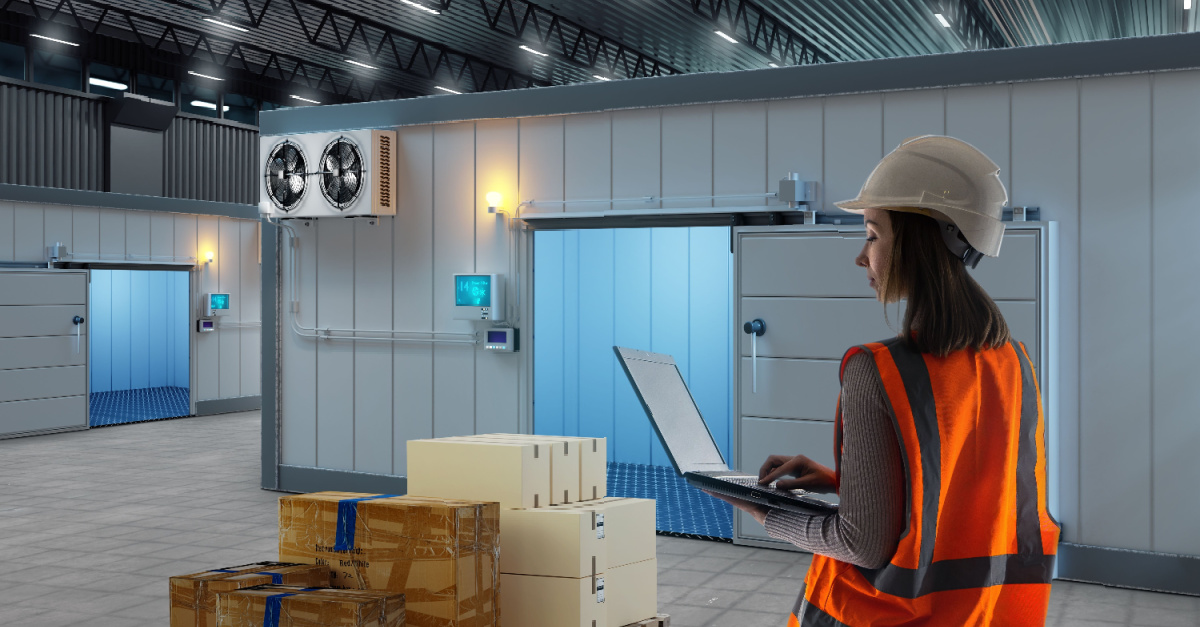
Cold Chain Logistics Growth and Technology Trends
The Black More Group – Cold chain logistics has transformed into a core component of modern global trade. It is no longer just a supporting function for frozen food and vaccines. Instead, it has become a critical link in protecting public health, maintaining food quality, and supporting international supply chains. As global consumption rises, healthcare expands, and e-commerce demand climbs, companies and governments are prioritizing cold transportation and temperature-controlled warehousing. This shift makes cold chain logistics growth a strategic focus in global logistics planning and modern supply chain investment.
Many consumers now expect fresh groceries delivered to their doorstep, even across borders. Hospitals require stable temperature systems for life-saving medicines. At the same time, food exporters and farmers depend on reliable cold distribution networks to reduce waste and reach wider markets. Because of these needs, cold chain logistics growth continues accelerating across Asia, Europe, and North America. Unlike past years when cold logistics was considered niche, it is now an essential ecosystem for protecting product quality and supporting communities. In simple terms, temperature control has become a public necessity, not merely an industry advantage.
Today’s markets demand freshness, safety, and speed. This forces logistics providers to improve cooling systems, monitoring technology, and delivery accuracy. As a result, cold chain logistics growth connects directly to food security, medical access, and international commerce. Additionally, customers are more informed and concerned about product handling. They want to trust that food stays fresh and pharmaceuticals remain safe from factory to doorstep. Because of this higher expectation, logistics companies are making large investments in cold warehousing, reefer fleets, and digital monitoring systems.
Moreover, global trade patterns are changing. For example, seafood exports from Southeast Asia, dairy shipments from Europe, and fruit trade from Latin America rely on dependable cold infrastructure. Governments also set tighter regulations for temperature-sensitive goods, making cold chain logistics growth part of economic policy and health strategy. In developing countries, upgrades to rural cold storage networks help farmers compete globally and reduce waste. Through this development, cold logistics supports sustainability, innovation, and food equality.
Modern IoT devices track temperature, humidity, and vibration during every shipment. Because of this, logistics teams can respond quickly if conditions change. Real-time alerts improve safety and support cold chain logistics growth by increasing trust in delivery performance.
Artificial intelligence forecasts delays, suggests routes, and predicts fuel needs. As a result, transport capacity increases and spoilage risk decreases. This efficiency empowers companies to scale operations and strengthens cold chain logistics growth with smarter decision-making.
Eco-friendly refrigerants, solar-assisted transport units, and hybrid power systems lower carbon emissions. Additionally, energy efficiency reduces long-term operational costs. With sustainability becoming essential, green technology directly fuels cold chain logistics growth worldwide.
Blockchain offers secure logs of handling data, ensuring product integrity and compliance. Brands use it to prove delivery quality, which protects consumer trust and supports cold chain logistics growth in regulated industries like pharmaceuticals and premium food.
Robots and automated storage systems improve accuracy and reduce product handling time. Aside from minimizing errors, automation improves labor efficiency. This advancement reinforces cold chain logistics growth by enabling high-volume, precise movement of goods.
Vaccines, insulin, plasma, and biologics require strict temperature control. Because medical demand keeps rising, cold chain logistics growth here is steady and essential for global healthcare.
Consumers enjoy international food options, fresh produce, frozen protein, dairy, and ready-to-cook meals. As lifestyles modernize, cold chain logistics growth increases to satisfy food delivery and retail supply.
Fresh seafood, meat, dairy, and fruit rely on proper temperature handling from farm to market. Thus, exporters view cold chain logistics growth as a tool to improve product value and reduce losses.
Same-day delivery services and e-grocery platforms depend on refrigerated delivery networks. As cities grow, e-commerce services accelerate cold chain logistics growth in last-mile operations.
Biological samples, research materials, and clinical trial shipments require high-precision cooling. Because science evolves quickly, research hubs strengthen cold chain logistics growth to support innovation.
The world relies on safe food, secure medical transport, and ethical farm-to-market supply chains. Climate change, urbanization, and rising food standards ensure cold chain logistics growth remains relevant for decades. Furthermore, investors and logistics firms view cold infrastructure as a high-value long-term asset, making this sector attractive for capital investment, job creation, and technology development.
A young child receives temperature-protected vaccines in a remote town. A family enjoys fresh imported salmon because supply chains kept it safe. A patient with diabetes receives insulin that remained stable throughout transit. These moments reveal the human heart behind cold chain logistics growth real people depending on invisible systems every day.
As transportation networks modernize, companies that invest in digital tools, sustainable cooling, and trained personnel will lead the market. Growth will depend on collaboration between logistics providers, retailers, healthcare leaders, and technology partners. With the right vision, cold chain logistics growth supports global trade, public health, and food security, giving communities around the world greater access to safe and high-quality products.
This website uses cookies.